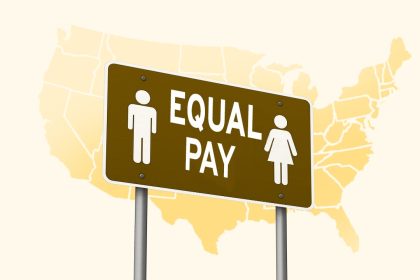President Donald Trump signed an executive order on Thursday directing the Department of Labor to revisit its guidance on including alternative assets — such as private equity, real estate and even cryptocurrency — in 401(k) plans. The move marks a controversial expansion of retirement investment options and may reshape how millions of Americans save for retirement.
While the order itself doesn’t change current policy, it signals strong support from the White House for allowing more sophisticated — and riskier — investments into everyday Americans’ retirement accounts.
The Department of Labor has been instructed to clarify how plan fiduciaries can legally incorporate such assets into defined-contribution retirement plans like 401(k)s and 403(b)s.
Supporters argue the change could open up new avenues for growth and diversification.
“The executive orders reduce regulatory ambiguity, opening the door for faster innovation and wider adoption,” says Jonathan Rose, CEO of BlockTrust IRA, a cryptocurrency investment platform that offers both AI-managed and self-managed IRA accounts.
But critics say it could turn retirement savers into guinea pigs — or worse, exit strategies for institutional private equity firms trying to unload underperforming assets.
Let’s break down who stands to gain and who could get burned as a result of the new executive order.
Winners: Private equity giants, retirement plan providers and risk-tolerant investors
Private asset managers have been trying to tap into the 401(k) market for years, and now they could be about to get the green light.
BlackRock, Blackstone, Apollo Global Management and KKR have all introduced products aimed at cracking into defined-contribution retirement plans. With Thursday’s executive order, they’re closer than ever.
Early implementations are likely to show up in target-date funds, where managers adjust portfolios over time based on an investor’s expected retirement date. This approach could allow professionals to marry higher-cost private assets with low-cost index funds — theoretically balancing risk and cost.
Back in May, Empower, one of the largest retirement service providers in the United States, announced plans to bring private assets into its offerings. Employees can only access these private investments if their employer chooses to offer them and works with an advisor. In theory, the move could help retail investors access returns previously limited to institutional players.
For cryptocurrency, Rose believes the new order will move institutional giants like BlackRock and Fidelity to expand their crypto offerings at a more aggressive pace.
“Under this new policy direction, crypto held inside a 401(k) could take several forms,” says Rose. “We will likely see the addition of crypto index funds and ETFs to standard retirement plan menus.”
He also sees the order as a tailwind for crypto-focused companies.
“We’ve already built the infrastructure to support managed cryptocurrency investments within retirement accounts, so this move will only further accelerate our momentum,” he says.
Losers: Regular 401(k) investors, transparency and fiduciary safeguards
But the devil’s in the details — and in this case, the fees.
Private equity firms can charge upwards of 2.5 percent in annual management fees. And once the fund earns profits above a certain threshold — say, 7 percent per year — the private equity firm often keeps 20 percent of those profits.
That’s a steep premium compared to public market options. For example, the asset-weighted average annual cost (expense ratio) for all passive U.S. funds was just 0.11 percent in 2024, according to Morningstar.
“Private investments often come with higher expenses and lower returns than what’s already available to the public,” says James Royal, principal investing writer and financial analyst at Bankrate. “Index funds are available in typical 401(k) plans at reasonable costs — and have proven track records.”
Private assets are also notoriously opaque. Unlike stocks or bonds, key details — like which companies are in a fund, what they earn or how they’re valued — is often difficult or impossible to discern. That makes it harder for both investors and fiduciaries to make informed decisions.
Royal is skeptical of the motives behind the push.
“In many cases, private investors view the general public as its ‘off-ramp,’ the people it wants to buy its investments when it’s ready to sell them. In other words, chumps,” he says. “After all, if private investments are such a great deal, why do sophisticated investors want to cut the public in on them? They don’t.”
What the executive order actually does
The order doesn’t mandate any changes — it can’t. But it does tell the Department of Labor to revisit and clarify its guidance. That includes spelling out what plan fiduciaries must do to legally include private assets in retirement accounts.
Under existing law, fiduciaries are required to act in the best interest of plan participants. That means weighing risks, returns and costs carefully. That becomes a lot trickier when dealing with complex, illiquid private assets.
During Trump’s first term, the Labor Department issued a letter stating that private equity could be part of a “prudent investment mix” in a professionally managed fund. But many plan administrators still shy away from alternatives, fearing legal risk.
This new directive may give plan sponsors legal cover to add alternative investments without worrying as much about lawsuits.
However, private investments might not appear in 401(k)s as quickly as headlines suggest. Evaluating private assets is complex, and retirement plan administrators — who’ve long favored simplicity and low cost — will likely proceed cautiously.
What retirement investors need to consider
If Thursday’s order leads to favorable guidance, the next wave of 401(k) offerings could come with a much steeper learning curve for everyday retirement savers.
Some financial experts worry that inexperienced investors could fall for flashy promises of big returns without fully grasping the risks — namely, that private assets can be illiquid and hard to value.
“The greater range of investments may make it harder to choose what’s appropriate for your needs,” says Royal. “Just because your plan offers private investments doesn’t mean you should buy them.”
Here are some highlights of how to choose the best funds for your 401(k):
- Focus on long-term performance and low fees: When comparing funds, prioritize those with solid five- and 10-year returns and low expense ratios. Don’t simply check one-year performers — short-term success might not last. Aim for consistent long-term results at the lowest cost.
- Diversify to reduce risk and boost stability: A mix of assets — primarily stocks and bonds delivered in either a target-date fund or mutual fund — can smooth out market volatility and improve long-term returns. Most experts recommend allocating no more than 5-10 percent into alternative assets — and that’s if you have a high risk tolerance.
- Know your risk tolerance before you invest: Pick an asset mix that fits your comfort level with risk. Many 401(k) plans offer tools or questionnaires to help match your investments to your risk profile.
- Understand that it’s possible to lose money in a 401(k): Your 401(k) isn’t protected from losses. Market-based investments like stocks and bonds can lose value depending on overall market conditions. But private equity and other alternative assets come with even greater risk. They’re often less transparent, harder to sell and more expensive to own. If you’re not careful, chasing higher returns in private funds could backfire — with no safety net.
“Investors would do well to stick with solid investments rather than wager their retirements on faddish assets with unproven track records such as cryptocurrency, or those with underperforming track records, such as private equity,” says Royal.
Bottom line
Trump’s new executive order isn’t just about what you can invest in — it’s calling into question the purpose of a retirement account. Is it a stable vehicle designed for the long haul, or a testing ground for Wall Street’s newest product?
The answer may depend on how aggressively private assets are marketed and how carefully fiduciary standards are upheld.
One thing is clear: The guardrails are shifting. And in a world where complexity often equals profit, everyday investors need to ask hard questions and think carefully.
“It’s more important than ever to understand your 401(k) investment choices and to choose wisely,” says Royal. “Your retirement is riding on it.”
Editorial Disclaimer: All investors are advised to conduct their own independent research into investment strategies before making an investment decision. In addition, investors are advised that past investment product performance is no guarantee of future price appreciation.
Why we ask for feedback
Your feedback helps us improve our content and services. It takes less than a minute to
complete.
Your responses are anonymous and will only be used for improving our website.
Help us improve our content
Read the full article here
















